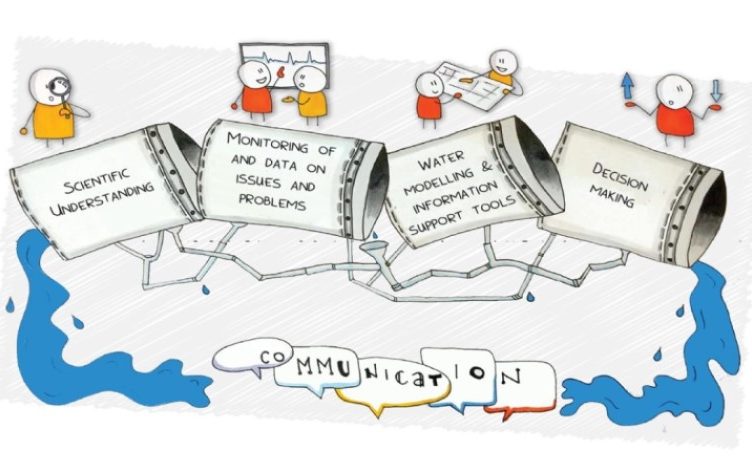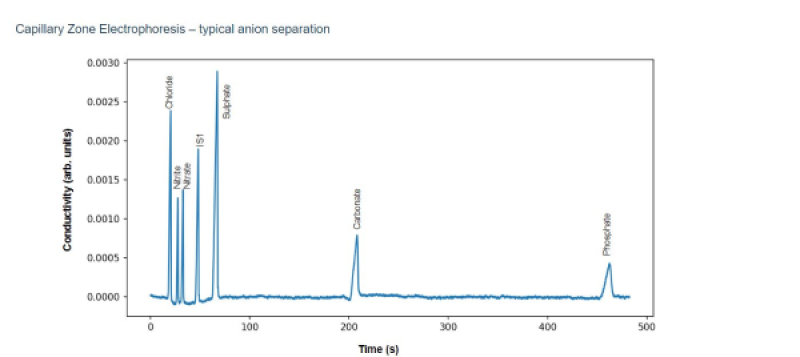
05/12/2024
Event Summary: Overview of water quality modelling projects from the Queensland Water Modelling Network with Callym Dunleavy
Read more
New sensor technology developed by Eco Detection is able to capture complex environmental data in near real time and simplify it to enable faster and better-informed water resource protection decisions.
Eco Detection’s sensor technology utilises Capillary Zone Electrophoresis (CZE) to separate ions for near real time detection of contaminants (see electropherogram below). Developed with Grey Innovation Pty Ltd in Melbourne, the technology can test down to ten parts per billion for contaminants such as nitrates and heavy metals, over 20+ analytes including Nitrates, Nitrites, Phosphate, Sulphate, Chloride, Fluoride, Ammonium, PH, Conductivity, Potassium and Sodium plus several other trace elements.

Sensor stations are able to provide sub-hourly and multi-hourly data for a wide range of freshwater constituents. This means the data is able to be used as an input to process based models which operate at a daily time step (or less). Such models often incorporate physical processes as calculations and inputs are based on physical observations like flow, climate, WQ and landscape geography, geology and geomorphology.
Models like MODFLOW and eWater’s SOURCE are used internationally to provide predictions of water quality outcomes for land and water use decision making. A well-known example is the Murray Darling water and land management model, which is used to trade water and assist in defining risk mitigations to assist in water usage best practice. The frequency of the data produced by the Eco Detection sensor system (temporal steps) means it can be used to support and calibrate daily time step models.

Sensor equipment can be powered by Solar making it suitable to locate in harsh terrains with communication systems designed for areas lacking in 4G.
The data from the Eco Detection system flows to both Mobile and Desktop where the user can view and /or download it in near real time. This allows users to see the results of the water sampling immediately or incorporate them into models as an event is occurring rather than waiting for weeks for the water samples to go through the Lab.

In New Zealand Eco Detection are working towards developing a national framework of accounting for nutrients in sediment with support of the government. The NZ Eco Detection team are currently deploying 100 sensors along the Waikato River from Lake to Sea. Providing Waikato Regional Council with over 150,000 data points – a significant increase from the current 888 samples per year.
For further information contact [email protected], or if you are interested in attending a seminar on the technology, contact Jenny Riches at [email protected].